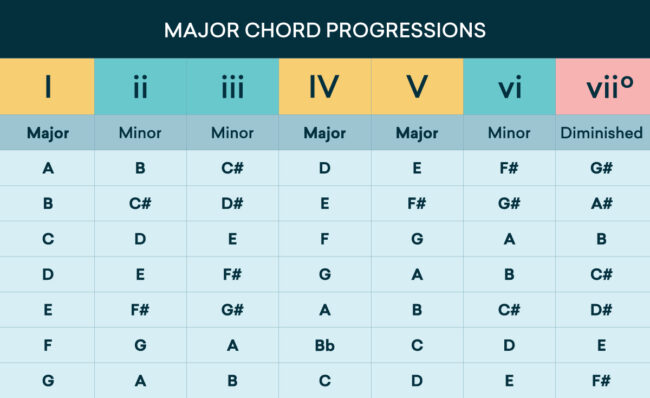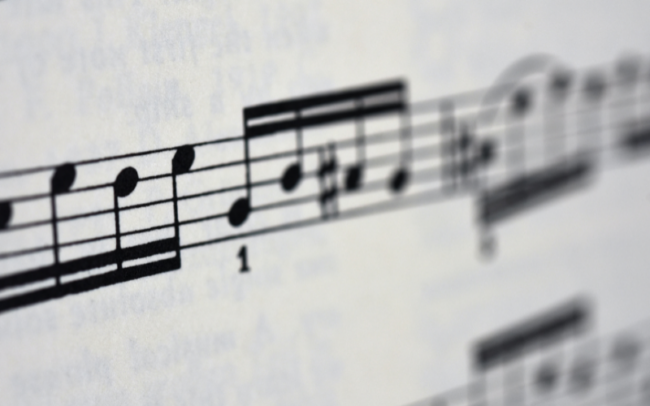If you decide to set foot in the music industry or are planning to learn music, what do you think is the pivotal factor you should master? Is it getting the right instrument? Consistent practice? Understanding chord progressions and music sheets? The answer is: all go together hand in hand.
Once you master all these three factors, consider that you have achieved something many people struggle with. However, in this article, we will learn what chords are and why it is vital to master these progressions. Let’s get started.
What is a chord progression, and why is it important?

As someone new to understanding music, you might wonder, “what are chord progressions?” This is quite a common question people have in the beginning. Here’s an easy way to understand chords; If you’re constructing a huge building, you need bricks. What bricks are to a building, chords are to music.
In other words, chords serve as the foundation of a musical composition. These form the basis and framework of a song, making them a crucial component of music. They support the creation of movement and direction in a piece of music. They are composed of a series of chords performed in a particular order. therefore known as a chord progression.
Understanding common chord progressions is crucial in your musical development, regardless of your experience level.
Why are chords important?

A song’s timbre and feel are greatly influenced by the chord progressions used in that song. Listeners’ emotional responses to various advancements might range from joyful and enthusiastic to depressed and reflective. It’s interesting how different note combinations can make listeners feel other things.
For instance, most songs that sound upbeat or are on a brighter scale typically include major chords. On the other hand, if a piece of music makes you feel down or unhappy, it is usually composed using minor chords on a lower scale.
Now, a genre that does intense compositions and utilization of chords is jazz. To an untrained ear, all that’s being played will not make much sense. However, if you’re actively learning music, the complexity and swiftness of chords will blow your mind.
If jazz is your area of interest, you should practice and master chord progressions ear training. It is a technique used by amateurs and maestros that trains their ears to identify each note in any chord, irrespective of its scale. Ear training is a crucial practice tool for making chord progressions learning easier.
Say someone plays a chord like Dm7(b5), which is The D minor seventh flat five. You’ll be able to dissect and grasp each note used to make this chord. And those notes would be D – F – Ab – C.
In the end, chord progressions play a significant role in music. Any musician’s education should emphasize learning how they work. Whether you’re a musician trying to develop your performance skills or a composer looking to craft great works, understanding common chord progressions is a crucial step in your musical path.
The most common chord progressions: What are they?

Before we jump into the list of chord progressions, let’s understand the notes that make up these progressions. For clarity, let us take the C scale. Here you’ll find seven notes, as shown below;
- C Major (CM) (i)
- D minor (Dm) (ii)
- E minor (Em) (iii)
- F Major (FM) (iv)
- G major (GM) (v)
- A minor (Am) (vi)
- B diminished (Bdim) (vii)
Here, the capital M and small m denote the major and minor keys, respectively. You’ll have a clearer idea when you start with music theory. Okay! Now that you know what notes are, let’s get on with the types of chords.
First off, there are many chords. You can produce a range of feelings by blending minor and major chords. And now for the list.
(Here onwards, keep an eye on the list above for easy reference)
The I-IV-V Progression
This particular progression is one of the most basic yet widely used chords. It is built using the chords on the first, fourth, and fifth scale degrees of a major scale. So on the C scale, you can play the C (i) – F(iv) – G(v) keys for this chord. These chords work well in pop and country songs.
The ii-V-I progression
The ii-V-I progression comprises the major scale’s second, fifth, and first scale degrees. So, what are the keys? The notes in the same scale will be D minor (ii), G major (v), and C major (i). It is commonly used in jazz to bring a sense of conflict followed by a resolution.
The I-vi-IV-V progression
The majority of 1950s love songs used this progression. It has four keys: C major, A minor, F major, and G major. This one is popular among musicians due to its dynamic nature. This chord is unique because it is difficult to assign a particular feeling to it.
The I-bVII-I progression
This three-note setup consists of the keys C – Bdim – C. It is used chiefly in Blues music, which generally tends to be somber and slow-paced. Furthermore, this progression is easy to remember since it has only three notes. Also, creative composers subtly bring this chord into other genres. Playing it with different chords at a higher tempo makes a huge difference.
Lasting thoughts

In a nutshell, chords are the foundation and building blocks that structure the music you listen to. Apart from the set of chords that you read here, there is a never-ending list of chords you can combine and create music that’s never heard before! These are altered or extended chords, where you add additional notes along with changing the intervals in between the notes.
And as an aspiring musician, it is much more essential to learn and deeply understand the basics of chord progressions. You’ll be able to assess and evaluate the music you listen to if you can play these note combinations to a great degree. Furthermore, it is an invaluable skill because it enables you to create and improvise quickly.
So that marks the end of this topic, folks! Ensure you give enough time and patience to develop yourself as an artist. Always remember that you cannot grow a tree today from a seed you sowed last night. Happy learning!
